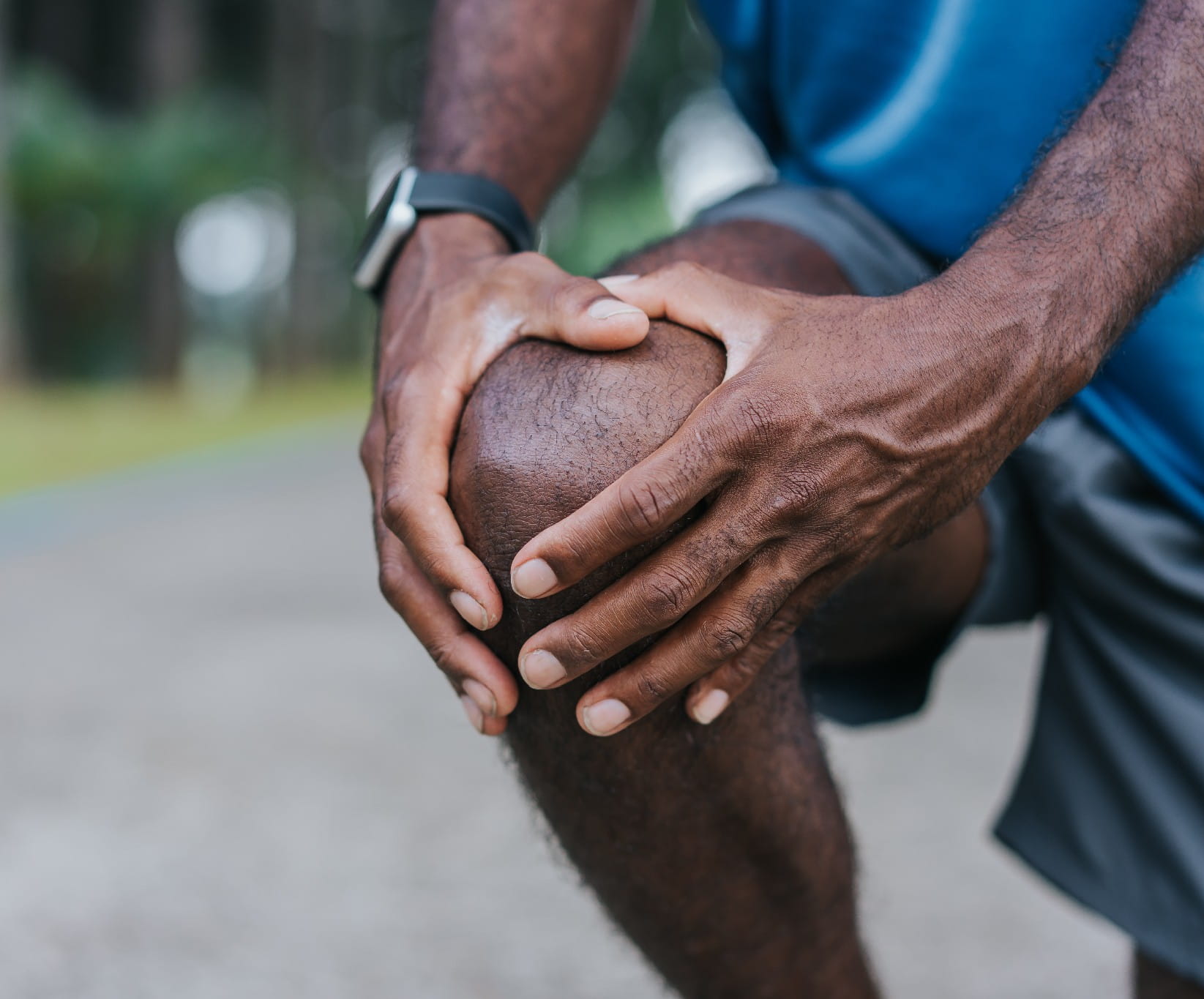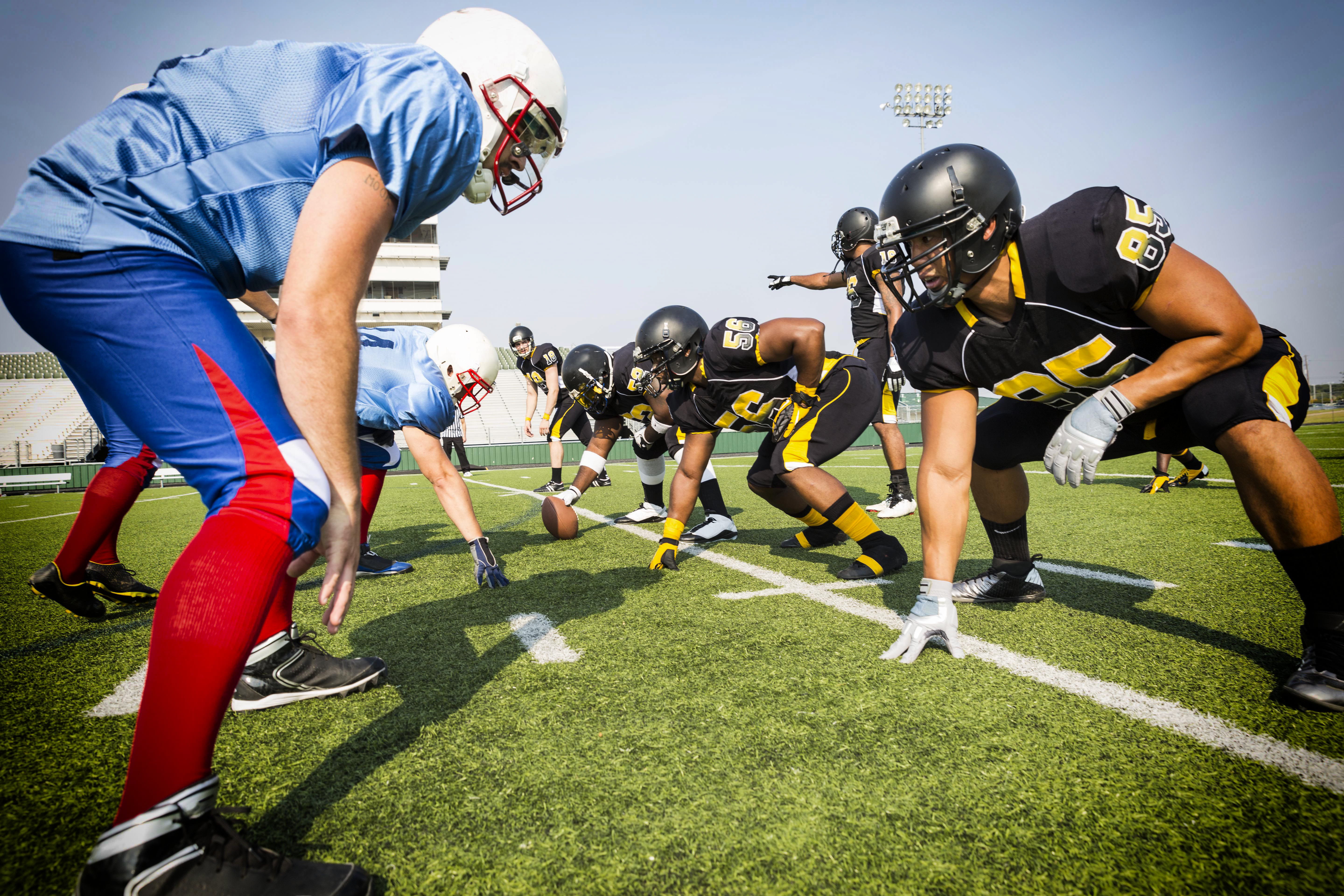If you’ve ever twisted your knee during a pickup basketball game or felt a sharp “pop” while squatting, you may have experienced a torn meniscus. This common knee injury affects people of all ages, especially those who live active lifestyles or work on their feet.
In this article, we’ll walk you through what the meniscus is, how a tear can happen, the most common torn meniscus symptoms, and what your options are for treatment and recovery. You’ll also learn a few smart ways to help protect your knees from future injuries.
What Is the Meniscus?

Your knee is a busy joint, doing a lot of work every time you walk, bend or jump. Inside your knee are two wedge-shaped pieces of cartilage called menisci (the plural of meniscus). One is on the inner part of your knee (medial meniscus), and the other is on the outer part (lateral meniscus).
These cartilage cushions act like shock absorbers between your thigh bone (femur) and shin bone (tibia). They help stabilize your knee and allow it to move smoothly.
When one of these cushions tears, the result can be painful, limiting and long-lasting if not treated properly.
“Your meniscus plays a vital role in protecting your knee joint. Even small tears can lead to bigger issues if ignored,” says Scott R. Kling, M.D., a board-certified orthopedic surgeon with Riverside Orthopedic and Sports Medicine Specialists.
Torn Meniscus Symptoms to Watch For

A torn meniscus can happen suddenly or over time, and the symptoms often vary depending on the size and location of the tear. Many people can still walk with a tear but that doesn’t mean it should be ignored.
Common signs and symptoms include:
- A popping sound or feeling at the time of injury
- Swelling or stiffness in the knee
- Pain when twisting, squatting, or rotating the leg
- A feeling that the knee is “locking up” or can’t fully straighten
- A sensation of the knee giving way
If you experience any of these symptoms, especially after an injury, it’s important to see an orthopedic specialist.
Meniscus Tear vs. ACL Tear: What’s the Difference?
It’s easy to confuse a torn meniscus with a torn ACL (anterior cruciate ligament), since both are common knee injuries, especially among athletes. But they’re actually quite different in how they happen, what they feel like and how they’re treated.
Here’s a quick breakdown:
| Torn Meniscus | Torn ACL |
| Caused by twisting, pivoting or squatting | Usually caused by a sudden stop, jump or direction change |
| May hear/feel a pop, but not always | Often a loud pop is heard or felt |
| Swelling may develop slowly over 1–2 days | Swelling happens quickly within hours |
| Pain during twisting or squatting | Knee may feel unstable or like it’s “giving out” |
| May still walk or bear weight | Harder to walk or put weight on the leg |
| Often treated with rest or minor surgery | May require ACL reconstruction surgery |
Torn Meniscus Torn ACL
Caused by twisting, pivoting or squatting Usually caused by a sudden stop, jump or direction change
May hear/feel a pop, but not always Often a loud pop is heard or felt
Swelling may develop slowly over 1–2 days Swelling happens quickly within hours
Pain during twisting or squatting Knee may feel unstable or like it’s “giving out”
May still walk or bear weight Harder to walk or put weight on the leg
Often treated with rest or minor surgery May require ACL reconstruction surgery
“A meniscus tear affects the cushioning in your knee, while an ACL tear impacts the stability. That’s why ACL injuries often feel more dramatic and unstable right away,” explains Dr. Kling.
What Causes a Torn Meniscus and Who’s Most at Risk?
Meniscus tears can happen to anyone, but certain movements and conditions increase your risk.
Activities that can cause a torn meniscus include:
- Pivoting or twisting quickly, especially while the foot is planted
- Squatting or kneeling deeply
- Lifting heavy objects with improper form
- Playing high-impact sports like soccer, football, basketball, or skiing
You may be more likely to tear your meniscus if you:
- Are over age 40 (degenerative tears are more common as we age)
- Play contact sports or activities involving quick direction changes
- Have osteoarthritis or other knee issues
- Work in physically demanding jobs (e.g., construction, plumbing)
“It’s not just athletes who get meniscus injuries. We see tears from simple movements like stepping off a curb the wrong way,” adds Dr. Kling.
Non-Surgical and Surgical Knee Injury Treatment Options
Treatment for a torn meniscus depends on the size and type of tear, your activity level, and your overall health. The good news? Not every tear needs surgery.
Non-surgical options for meniscus tear recovery include:
- RICE method (Rest, Ice, Compression, Elevation)
- Physical therapy to strengthen muscles and improve range of motion
- Knee braces to support and stabilize the joint
- Anti-inflammatory medications for pain and swelling
- Activity modifications to avoid further stress on the knee
These conservative treatments often work well for minor tears or in older adults with degenerative tears.
Surgical options may be recommended if:
- Your tear doesn’t improve with rest and therapy
- The knee remains locked or unstable
- The tear is large or in a part of the meniscus that has good blood supply (which can heal with sutures)
There are two common surgical procedures:
- Meniscus repair: The tear is stitched back together to allow natural healing.
- Meniscectomy: A portion of the damaged meniscus is trimmed away to restore function.
Both are usually performed arthroscopically, meaning through small incisions with a camera and surgical tools.
Post-Op Recovery: What to Expect After Meniscus Surgery
Meniscus surgery recovery depends on the procedure and your overall health.
Here’s what you can expect:
- Meniscectomy recovery: Usually 4 to 6 weeks. Most people return to normal activity fairly quickly.
- Meniscus repair recovery: May take 3 to 6 months due to slower healing. This option is more common in younger patients.
Physical therapy is a key part of healing. You’ll gradually rebuild strength, flexibility, and balance to protect the knee long term.
Your surgeon will guide you through when to return to walking, driving, sports or work. Following instructions closely will help prevent reinjury.
How to Prevent a Meniscus Tear
While not every tear can be avoided, there are steps you can take to protect your knees, especially if you’re active or have had a prior knee injury.
Tips to reduce your risk of meniscus injuries:
- Warm up properly before sports or exercise
- Strengthen your leg muscles, especially your quads and hamstrings
- Use proper technique when lifting, squatting or twisting
- Wear supportive footwear with good traction
- Avoid sudden changes in direction when possible
- Listen to your body and don’t “push through” knee pain
Staying flexible and strong can help your knees stay healthy, especially as you age.
When to See a Knee Specialist
If you have persistent knee pain, clicking or instability after an injury, don’t wait to seek help. A torn meniscus won’t always heal on its own, and early treatment can prevent long-term joint damage.
A sports medicine or orthopedic specialist can examine your knee, provide imaging if needed, and work with you to create the right treatment plan.
Schedule an appointment online so you can be evaluated right away.
Riverside OrthoConnect has next business day appointment availability in most cases.
Or call the Riverside Sports Medicine Hotline at 757-534-6767, from 7am-10pm, 7 days a week to schedule an appointment with a sports medicine specialist. Same day/next day availability in most cases.



